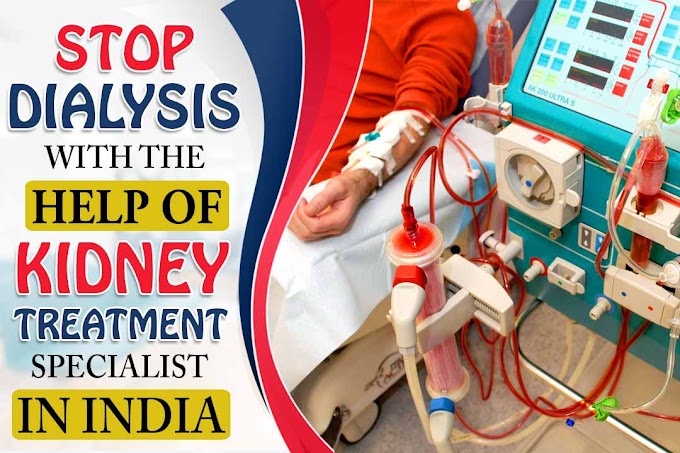What is pediatric Nephrotic syndrome?
Nephrotic syndrome is not a disease rather a bunch of symptoms indicating kidney damage. It indicates kidney damage, particularly to the glomeruli (small units within the kidneys) where the blood filtration process is carried out. Also, it results in the release of too much protein from the body into the urine.
There are numerous proteins present in our blood, each having its own sets of functions. If we talk about albumin, which is the core of Nephrotic syndrome, this protein form helps prevent excess fluid from seeping into the cells and tissues. Proteins are large molecules that do so many remarkable functions in the body. Albumin helps regulate the body's blood pressure level in one way or the other, and we cannot afford its absence.
There are two types of childhood nephrotic syndrome
- Primary nephrotic syndrome: The most common form of nephrotic syndrome in which the perilous effects go towards the kidneys only.
- Secondary nephrotic syndrome: This form of nephrotic syndrome is caused by other diseases that may affect your kidneys secondarily.
If your child has the disorder, you may need to consult a pediatric nephrologist- a doctor who specializes in kidney-related diseases in children. However, if you do not have a pediatric nearby, some nephrologists who treat adults can only also be consulted. Or nephrotic syndrome treatment in Ayurveda can be taken to get rid of nephrotic syndrome in your child. Since it is a natural approach, it can never go wrong with your child’s health.
What causes childhood Nephrotic syndrome?
There is no fixed reason why your child has nephrotic syndrome. Researchers are still working their way to link certain diseases and some specific genetic changes that damage the kidneys and manifest with primary childhood nephrotic syndrome. Or the opposite is the case with secondary nephrotic syndrome. Some primary illnesses can alter kidney function and result in secondary childhood nephrotic syndrome.
Congenital diseases: Diseases that are present since birth can also result in childhood nephrotic syndrome.
Childhood nephrotic syndrome
The following may be the causes:
- Minimal change disease: Minimal change disease results in abnormal kidney function, but if you examine the kidney tissue under the microscope, it appears normal. The damage to the glomeruli cannot be seen with a normal microscope but with an electron one only. The cause of minimal change disease is still not known, but this itself is the main cause of childhood nephrotic syndrome.
- Focal segmental glomerulosclerosis: It is the scarring of the tissues within the glomeruli. The impairment is only in one part of the glomerulus. FSGS can result from another disease, a genetic defect, or certain medications or may occur for no known reason.
- Membranous nephropathy: It is a group of disorders that may allow antibodies to buildup in the glomeruli and thicken the membranes within. This only happens when the immune system is at fault and allows antibodies to build up. It is associated with other medical conditions, such as lupus, hepatitis B, malaria and cancer, etc.
Secondary childhood nephrotic syndrome
The following may be the causes:
- Diabetes: A condition that occurs when the body is unable to use glucose present in the blood.
- IgA vasculitis: A disease that causes small blood vessels in the body to become inflamed.
- Hepatitis: Inflammation of the liver.
- HIV: It is caused by human immunodeficiency virus that changes immune system function.
- Lupus: Autoimmune disease that attacks the body's own immune system.
- Malaria: A disease related to the blood.
- Medications: Certain types of medicines like aspirin, ibuprofen, etc. can also cause secondary childhood nephrotic syndrome.
Congenital Diseases and Childhood Nephrotic Syndrome
Congenital nephrotic syndrome is a rare condition that occurs in infants in their first few months of life. It is also called infantile nephrotic syndrome and is mainly caused by genetic defects or infections (in mothers) at the time when the baby is born.
What are the signs of childhood nephrotic syndrome?
The signs and symptoms of childhood nephrotic syndrome may include: Edema: Swelling in the lower body part can be seen and often on the hands and face. Albuminuria: It is characterized by too much albumin loss. To know if your child has albuminuria, ask him to see how the urine appears. Foamy urine occurs when your body loses protein.
Hypoalbuminemia: Low albumin levels in the blood.
Hyperlipidemia: Higher levels of blood cholesterol and fat levels in the blood.
Some nonspecific conditions include:
- Loss of appetite
- Diarrhea
- High blood pressure
- Nausea and vomiting
- Blood in the urine
- Infections
- Abdominal pain
- Lethargy
- Fever
Get your child nephrotic syndrome treatment in Ayurveda if tests confirm some sort of kidney damage.
How is childhood nephrotic syndrome diagnosed?
A health care provider diagnoses childhood nephrotic syndrome with
- a medical and family history
- a physical exam
- urine tests
- a blood test
- ultrasound of the kidney
- kidney biopsy
Nephrotic syndrome treatment in Ayurveda
Ayurvedic treatment helps to focus more on the improvement in kidney function rather than finding alternatives. It deals with flaws that resulted in Nephrotic syndrome and thus compromised kidney function along with fighting the signs.
Only pure and authentic herbs are used in the treatment, so there is no way this treatment can ever go wrong with your child’s health.












0 Comments